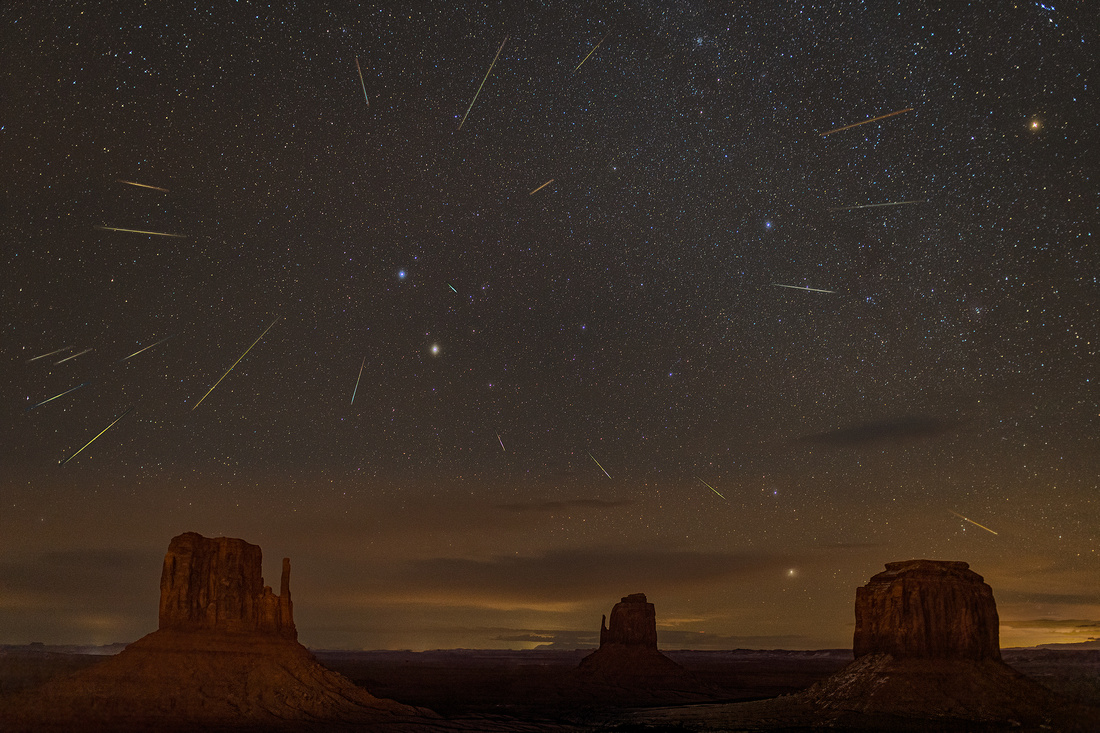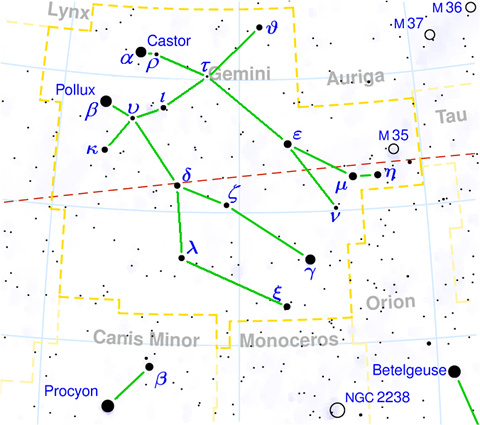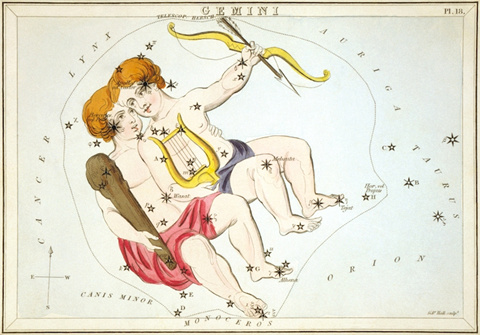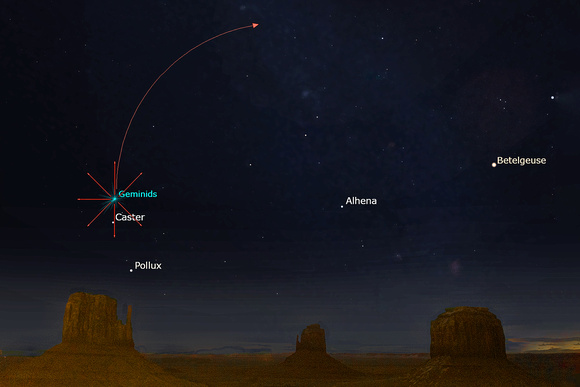Beautiful Debris


Most people don’t like dust. But to an observer of the night sky, dust can be transformed into a thing of beauty. We’re talking about meteors.
Meteors are high speed fragments and particles that burn up upon entry to the Earth’s atmosphere.
Comets and some asteroids leave a dusty trail behind as they orbit the Sun. Every year the Earth passes through these debris trails. When the debris enters our atmosphere, it burns up creating fiery, colorful streaks in the night sky.
Meteor or meteorite? If a meteor survives its trip through the atmosphere and reaches the ground, it becomes a meteorite. About 33,000 to 110,000 tons of meteorites reach the earth every year!
A Newcomer
December brings the Geminids meteor shower. It’s considered to be one of the best and most reliable annual meteor showers.
The Geminids first began appearing in the mid-1800s. The first showers weren’t noteworthy with only 10 to 20 visible meteors per hour. But since that time, the Geminids have grown to become one of the major showers of the year.
Most meteor showers originate from comets. The Geminids are unusual and originate from an asteroid, 3200 Phaethon. Due to its close approach to the Sun, Phaethon is named after the mythical Greek character who drove the Sun-God Helios's chariot.
It may be a "dead comet" that has lost all its volatile materials leaving only rock behind. During its very close approach to the sun, bits and pieces break off from the 3.7-mile in diameter asteroid adding to its dust trail.
During the December 13-14 peak, 120 Geminid meteors per hour can be seen under perfect conditions. The Geminids are bright, fast meteors that tend to be yellow in color.
Geminids travel 78,000 miles per hour, over 40 times faster than a speeding bullet. But don’t worry about being hit. Geminids burn up 45 to 55 miles above the Earth.
Why Geminids?
The shower owes its name to the constellation Gemini because the meteors appear to emerge from the constellation Gemini (twins). Our ancestors had great imaginations!


The two bright stars Castor and Pollux each mark a starry eye of a Gemini Twin. Image via AugPi/ Wikimedia Commons.


This depiction of the Gemini twins is from Urania’s Mirror, a set of cards containing astronomical star charts, first published in 1824. Image via Wikipedia.
The Shot
I was very fortunate to be in Monument Valley on the Navajo reservation December 9th through the morning of the 13th for a photography workshop. With the Geminids peak activity occurring that evening, I elected to stay an extra day.
It was the easiest night photography ever! My room at The View Hotel featured the view of the iconic West Mitten, East Mitten, and Merrick’s Butte from my patio. I framed the scene, set the camera to take continuous photographs, and stepped back into my cozy, warm room and enjoyed an adult beverage.
I captured 1,506 images at ISO 5,000, f1.6, and 8 seconds at a 35mm focal length between the beginning of astronomical twilight and the moonrise. After the moonrise, the meteors were washed out by the bright light of the moon.
Twenty-two images captured meteors! In Photoshop, I selected a base image of Monument Valley and the night sky. The Geminid radiant (the apparent point of origin with the radiating arrows) moved up and to my right (the curved line) as the evening progressed. So, I had to rotate and move each of the 22 meteor images to line up with my base image radiant. Only the meteors were then selected and pasted into the base image.


Several hours and about 40 Photoshop layers later, I had this composite of the evening’s meteor shower.
I was honored to be selected as the December 25, 2022, Astronomy Picture Of the Day (APOD). APOD is supported by NASA, the National Science Foundation, and Michigan Technological University. There are over a million views a day of astrophotography submitted from around the world.
I never thought I’d have one of my pictures accepted. Look for it in the archive dated 12/25/2022 (Astronomy Picture of the Day Archive (nasa.gov)).
Thanks for looking,
Chuck Derus